Wuxi Travel Guide: A Poetic Water Town of Eternal Charm
Your essential travel guide to Wuxi, the 'Pearl of Lake Tai' and star of China's 2025 Spring Festival Gala. This enchanting Jiangnan water town seamlessly blends ancient canals, classical gardens, and modern innovation. From the iconic Turtle Head Isle to historic temples, discover where traditional Chinese culture meets contemporary dynamism.
Crystal Zhao
1/30/20256 min read
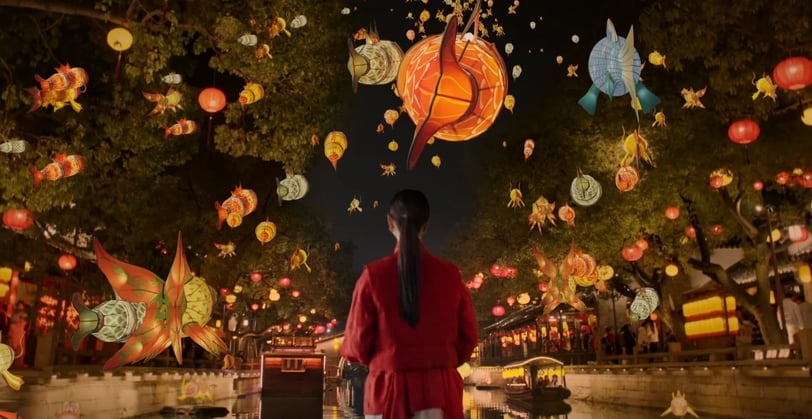

Wuxi waterfront at night, screenshot from 2025 CCTV Spring Festival Gala.
The rhythmic beats of drums stirred ripples across the water; the melancholic notes of the erhu accompanied graceful dance steps. On January 28th, as the 2025 Chinese Spring Festival Gala commenced, Wuxi, serving as one of the sub-venues, showcased the mesmerising beauty of its water towns through the medium of water itself. While this gala performance offered viewers a glimpse of Wuxi's unique watertown charm, the story of this city runs far deeper.
City Overview
Wuxi, renowned as the "Pearl of Lake Tai", is nestled in the heart of the Yangtze River Delta in southern Jiangsu Province, Eastern China. It stands as an exemplar of Jiangnan water towns. Ancient poets once depicted its poetic scenery with verses like "Lotus fragrance drifts across misty waters, while tea smoke curls gently by cool pavilions." The intricate network of Lake Tai, the Grand Canal, and the Xi River weaves a tapestry of waterways that defines this Jiangnan landscape.
As a crucial cradle of Jiangnan civilisation and Wu culture, Wuxi supposedly earned its name (meaning "without tin") after its tin mines were exhausted. However, this loss of tin resources did not hinder the city's development; rather, it catalysed its commercial prosperity. Leveraging its strategic position along the Grand Canal's golden waterway, Wuxi had already evolved into a vital transportation hub during the Tang and Song dynasties. By the Ming and Qing periods, it had become the "wealthiest region in Jiangnan", bustling with silk and grain trade. Today, this millennium-old city has transformed into a science and innovation highland of the Yangtze River Delta, leading globally in Internet of Things (IoT) industry clusters. Its thriving integrated circuit and biomedical industries, interwoven with old factories and new cultural tourism along the ancient canal, create a double-sided embroidery of this "City of Smart Manufacturing."
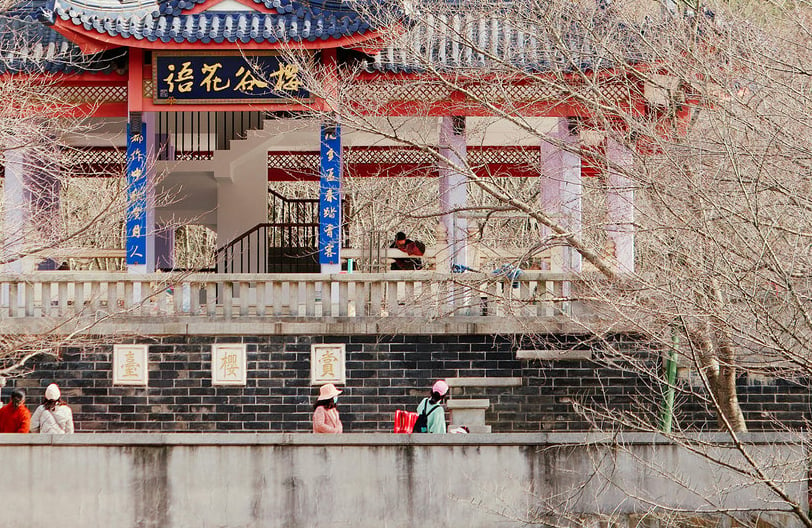

Sakura-Enjoying Tower on turtle head isle, photo by rui wang on pexels
Must-Visit Attractions
Turtle Head Isle: Lake Tai's Premier Scenic Spot
Turtle Head Isle (Yuantouzhu) is a peninsula studded with historical relics and private gardens, surrounded by mountains reflected in the lake waters. It offers the finest vantage point for appreciating Lake Tai's scenery. Spring brings cherry blossoms, autumn delivers osmanthus fragrance, but its most celebrated view is captured in the phrase "Lake Tai's finest spot is Turtle Head Isle in late spring." The great Song Dynasty poet Su Shi once wrote: "Mountains touched by wisps of cloud, heaven meets withering grass, as I sleep in a painted boat listening to the rain"—perfectly capturing the poetic essence of Lake Tai's misty views.
The Ten-Li Fragrant Path serves as the main entrance to the scenic area, winding along mountains and waters with ever-changing views. Each season brings its own charm: spring paints the landscape in peach blossoms and willow green, summer fills lotus ponds with fragrance, autumn decorates trees in vibrant colours, and winter blankets everything in pristine snow.
Yuanzhu Spring Waves marks the core scenic area, featuring attractions such as the lighthouse, the "Turtle Head Isle" stone tablet, the "Horizontal Cloud" cliff inscription, the "Divine Turtle of Zhenze" bronze statue, Chenglan Hall, and Flying Cloud Pavilion. Pavilions peek through mountain forests, while the lighthouse stands tall by the lake; distant islands seem to float on the horizon as waves lap against the shore.
The Hengyun Mountain Villa showcases classical Jiangnan garden architecture. Here, gardens embrace the lake and mountains, with pavilions, corridors, small bridges, and flowing waters epitomising the classical garden style of Jiangnan water towns.
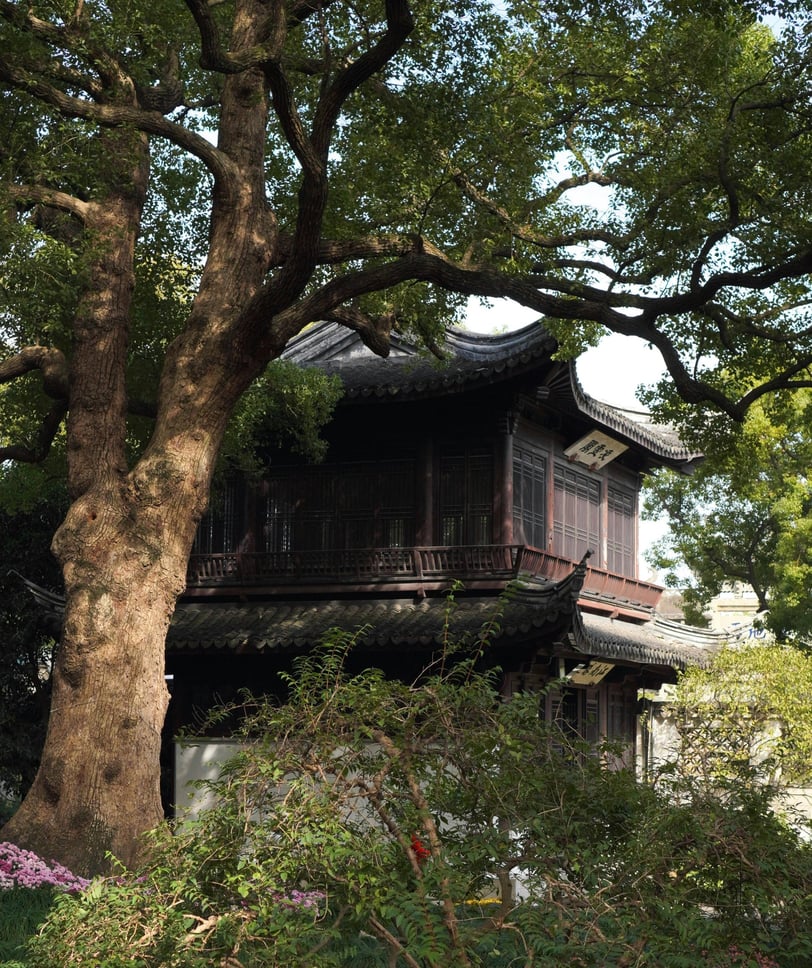

traditional chinese building in huishan ancient town, photo by m.zen on pexels
Huishan Ancient Town: Millennial Heritage, Springs and Temples in Harmony
Huishan Ancient Town stands as a vital carrier of Wu culture, with centuries of history settled into its stone-paved lanes. Famous not only for its clay figurines, pastries, and tea culture, it's particularly renowned for hosting "A Hundred Ancestral Temples in One Town"—unique in Jiangnan. Over a hundred ancestral halls from the Ming and Qing dynasties line the streets, their upturned eaves and black tiles recording the rise and fall of noble families.
Deep within the ancient town lies the "Second Best Spring Under Heaven"—Huishan Spring. Lu Yu's "The Classic of Tea" praised its water as "sweet, fragrant, thick, and smooth, unlike any other spring." Su Shi once came here on a moonlit night to draw water for tea, leaving behind the immortal verse: "Bringing along the small round moon from heaven, to taste the second spring on earth." The spring remains crystal clear today, and the weathered stone railings seem to still echo with the verses of ancient scholars.
Climbing to the peak of Huishan offers a panoramic view of the city. A stroll through Jichang Garden (one of the four famous gardens of Jiangnan) reveals square ponds reflecting the moon and convergent streams, masterfully borrowing views of the Longguang Pagoda on Xishan Mountain—truly embodying the principle from "The Craft of Gardens": "Though crafted by human hands, it appears naturally formed by heaven."
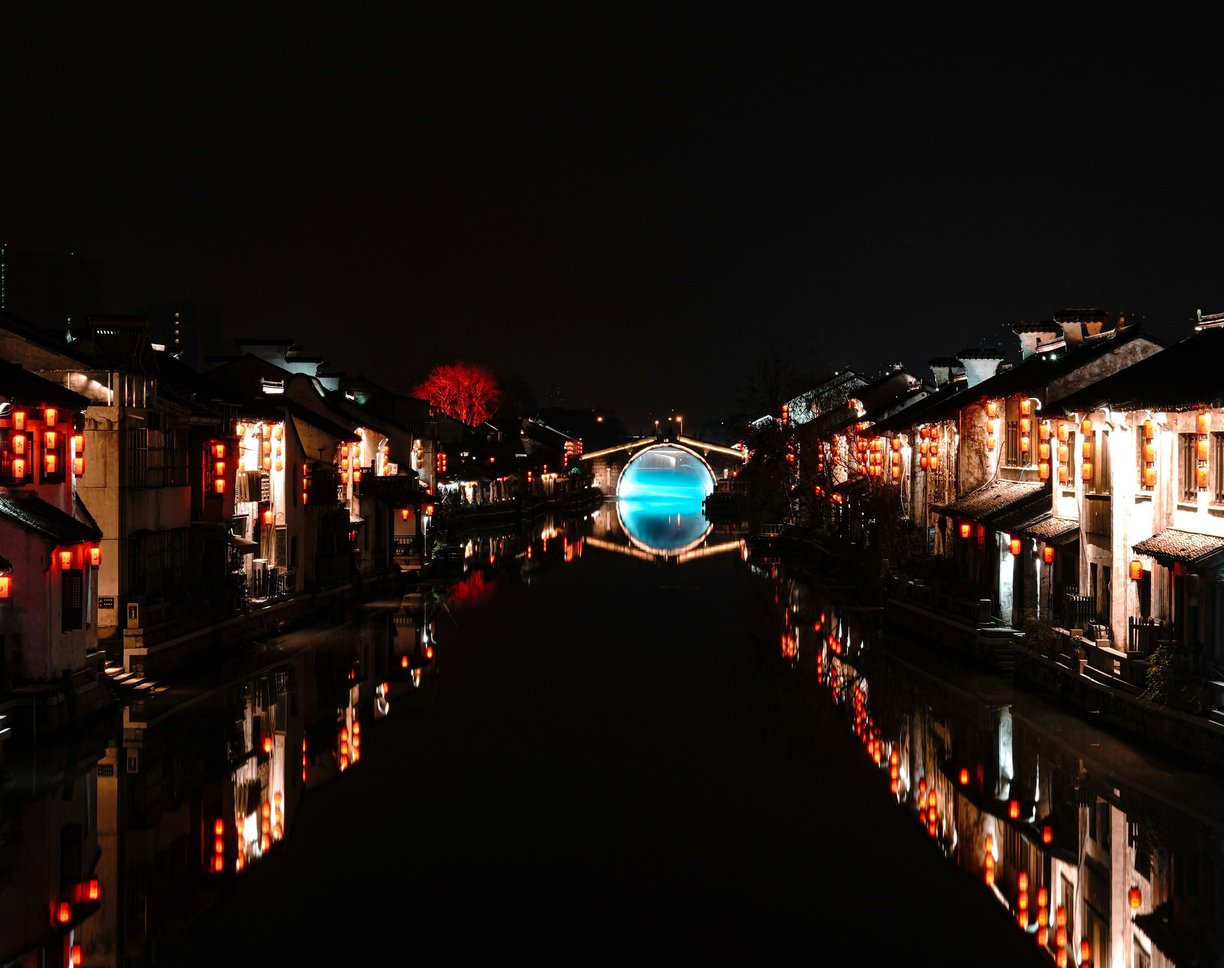

liangxi district of nanchang street at night, photo by 瓜田月下 on unsplash
Nanchang Street: Canal Culture, Where Past Meets Present
Nanchang Street, a stone-paved thoroughfare that has wound along the ancient Grand Canal for a millennium, stands as living proof of Wuxi's growth alongside its waterways. Ming and Qing dynasty residences with grey tiles and black bricks stand alongside creative cafés, while traditional painted boats dock at weathered stone steps, seeming to echo the bustling commercial scenes from 400 years ago. At the street's heart, Qingming Bridge arches over the water like a rainbow—Wuxi's oldest existing stone arch bridge, its body covered in hanging vines, its arch creating perfect circles with its reflection. As dusk falls and lights begin to twinkle, it offers the perfect spot to appreciate the "ten miles of lamplight reflected in oar splashes."
Walking along the river, visitors can explore several cultural landmarks:
China Silk Museum: Converted from a century-old silk reeling factory, it tells the story of Wuxi as the "City of Silk," where red brick industrial architecture interweaves with silk and light to create industrial aesthetics.
Wuxi Kiln Sites Museum: Next to Ming and Qing dynasty kiln sites, decoding the canal's memory of "building cities with bricks and tiles."
Dayao Road Teahouses: Savour Biluochun tea in waterfront teahouses while watching black-awning boats drift past carved window lattices.
Tonight's "Liang" Night Market: As lanterns light up, creative handicrafts, intangible cultural heritage sugar paintings, and Lake Tai brews blend their aromas, reminiscent of the "night markets lasting until the third watch, only to reopen at the fifth" described in ancient texts.
Practical Travel Information
Best Time to Visit
Spring (March-May): Plum blossoms bloom, weather is pleasant
Autumn (September-November): Osmanthus flowers spread their fragrance, skies are clear and crisp
Transportation
High-speed Rail: 45 minutes from Shanghai
Metro: Comprehensive coverage of major attractions
Water Tourism: Boat tours available for experiencing the watertown scenery
Accommodation Recommendations
Lake Tai Area: Near Turtle Head Isle and Lake Li scenic belt, offering mountain and lake views
Nanchang Street Area: Boutique hotels and inns along the ancient canal
Central Sanyang Plaza: Connected to metro hub, surrounded by modern shopping and traditional restaurants
Near Huishan Ancient Town: Perfect for immersive experience of slow-paced Jiangnan lifestyle
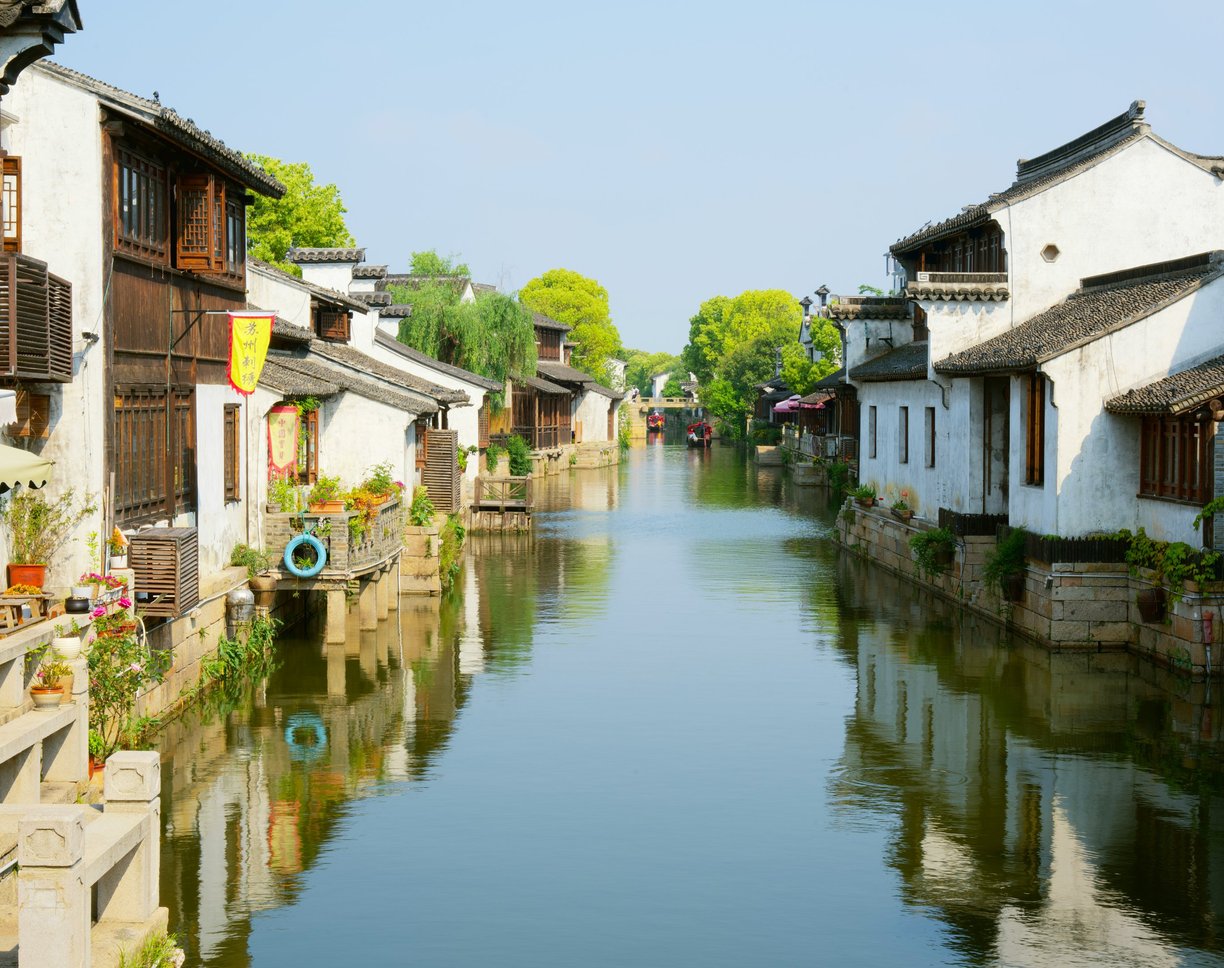

wuxi during the day, photo by jerry wang on unsplash
Epilogue
"Misty rain darkens a thousand homes, poetry and wine chase the years." The glittering Jiangnan that Su Shi described a millennium ago still flows through Wuxi's lakes and mountains today. Here, waters flow under the ancient canal's stone bridges while reflecting the glass walls of IoT towers; winds ripple the square ponds of Jichang Garden while brushing past smart sensors in science parks. If you wish to understand a city's millennial heritage and future ambitions, Wuxi offers the most poetic annotation—unhurried, it brews the stories of willow-lined bridges and painted boats into a cup of Biluochun tea, waiting for you to savour the layers of time.
